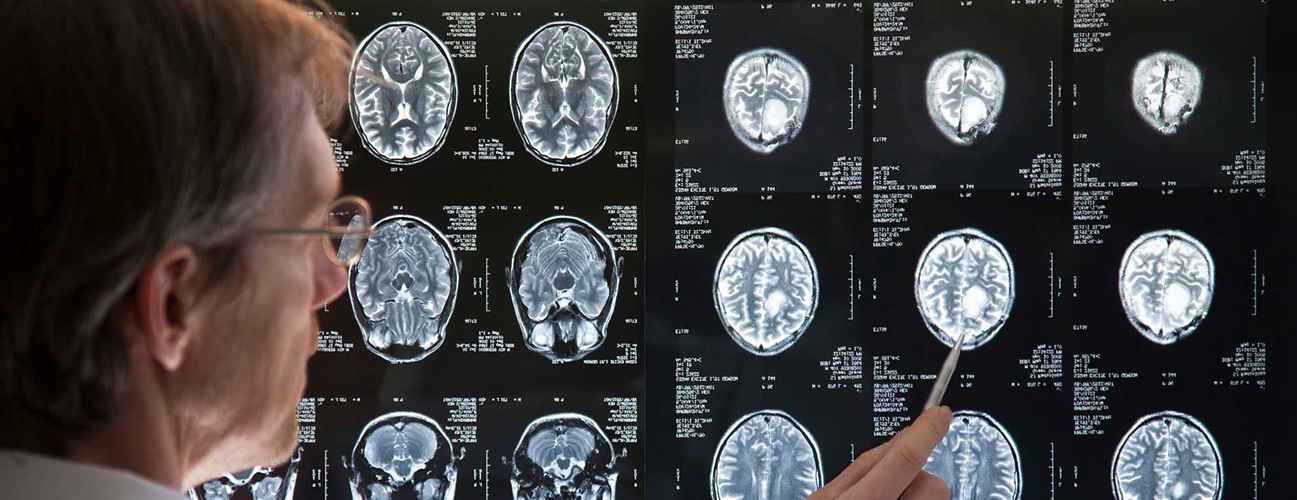Meningioma Recurrence
Featured Expert:
If you have been diagnosed with a meningioma and undergone brain tumor surgery to remove it, you're probably eager to get back to your life and put the experience behind you.
Chances are, your neurosurgeon has informed you that you will need to return for regular screening. Why? Because even though the vast majority of meningiomas are treatable, they can return.
It's important to address a recurring meningioma promptly. Problems caused by a tumor pushing on the brain or invading nerves or vessels are more difficult to reverse than they are to prevent.

What are meningiomas?
Meningiomas are tumors that arise from the membranous layers that cover the brain and spinal cord, not from the brain tissue itself. Tumors commonly grow over the years, instead of weeks or months, and can be removed surgically.
Biologically, most meningiomas are benign, but some can be very aggressive and difficult to treat, especially when they surround nerves — such as the optic nerve, affecting vision — or blood vessels — such as the large sinuses that drain blood from the brain.
How likely is a meningioma to return?
In one study, almost half of surgically removed meningiomas recurred after 20 years. That's why there needs to be regular monitoring. Though meningioma patients are never completely "out of the woods," you can live a normal life while you're being vigilant with regular brain imaging.
According to experts at the Johns Hopkins' Comprehensive Brain Tumor Center, several factors can influence the chance that a meningioma will come back after being treated with surgery alone:
- Was the surgery able to remove all of the meningioma?
- What was the grade of the tumor?
- What were the size and location of the tumor? Was there more than one?
- How old is the patient? Is he or she generally healthy?
What happens if the surgeon can't completely remove a meningioma?
After meningioma surgery, your surgeon will arrange for a postoperative scan within a few days of your procedure. This scan helps ensure that the tumor and its attached membrane (the dura) were completely removed. (A new meningioma can arise from the dura if it's not taken out.)
Complete removal of a meningioma and dura is the best way to avoid a recurrence. However, there is still a 24 to 32 percent chance that a meningioma will recur in 15 years, even when the original tumor was completely removed. In about 95 percent of recurrences, the new meningioma grows in the same spot as before.
In some cases, total resection, or removal, is not possible. If a meningioma tumor is not removed completely, it is likely to regrow within 10 to 20 years.
What does a meningioma's grade have to do with its chance of recurring?
Up to 90 percent of meningiomas are grade 1. This means that the tumor's cells appear indolent (slowly growing) under a microscope and the tumor is not spreading.
Atypical or anaplastic meningiomas tend to involve the brain. They can recur and may also have necrosis (a core of dead cells within the tumor), which is a malignant feature. These tumors are composed of rapidly dividing cells, accounting for their fast return.
Meningiomas that recur more than twice are more likely to be a higher grade. Some can even be malignant.
Can radiation help prevent a meningioma recurrence?
Radiation therapy can be used to reduce the size of a brain tumor in patients who are too ill for surgery and also destroy tumor remnants that were not able to be removed during surgery.
Radiation therapy for meningiomas can be in the form of conventional radiation or intensity-modulated radiotherapy, a type of external beam radiation that uses computer-controlled radiation beams in conjunction with three-dimensional CT images of the tumor site and surrounding area.
Stereotactic radiosurgery is another type of radiation that can be used on the remaining pieces of meningioma. Usually, patients only require a single treatment. As long as the remaining tumor is not located too close to nerves or vessels, stereotactic radiosurgery is safe and causes little damage to surrounding tissues.
For larger tumors or tumor remains that are close to critical nerves or blood vessels, your doctor may choose fractionated radiation. This procedure involves administering several small doses of radiation over a certain period of time.
In rare instances when a recurrent meningioma becomes malignant, radiosurgery may be recommended. Typically, it takes some time for the tumor to respond to this treatment.
What should I look for in a treatment center for recurrent meningioma?
A combination of expertise is important in deciding your treatment plan. The ideal team has experts in neuro-oncology and neurosurgery who are working closely together. You need a group that will help you follow up with regular exams to monitor your condition.
The team at the Johns Hopkins Meningioma Center comprises eight neurosurgeons who conduct weekly conferences, support one another in the operating room and collaborate on research that may lead to discovering new treatments.







